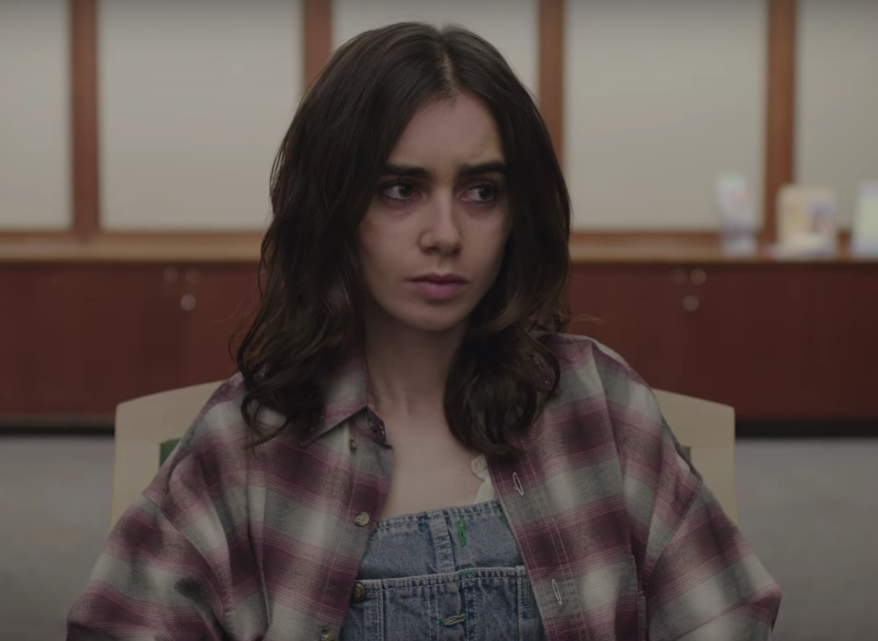Almost 14 years ago I was standing in my friend’s kitchen when she looked at me and said, “I think you might be anorexic.”
This was one year after I had started starving myself. I was 80-something pounds, bruising from anemia, and fainting in the bathroom after cross-country practice. I didn’t know then what the future held: years of denial, frustration, bulimia, weight fluctuations, therapy, and dozens of misguided, painful comments from friends and family, until an eventual recovery.
Videos by VICE
So now that Netflix is putting out its new movie To the Bone, I pay attention. In the film, an emaciated white girl, played by Lily Collins, suffers from anorexia nervosa until her family pushes her to an inpatient recovery center with a supportive therapist played by Keanu Reeves. It’s a familiar story, and it’s one that no longer serves us.
I first saw the trailer for To the Bone when radio producer Brenda Salinas called me up to talk about it, but I’d seen this movie before. I saw it in For the Love of Nancy, when Tracy Gold jogged in her room at night trying to sweat off the calories her doctors forced on her. I saw it in Center Stage, where Susan May Pratt plays an uptight ballerina who purges in the bathroom after meals. I saw it in Girl, Interrupted. They are all what To the Bone is: white, young, starving. Women with control issues, women with money. All of them recover.
People suffering from eating disorders no longer fall into this mold. The disorder itself is not just anorexia: it’s binge eating, anxiety, laxative abuse, exercise addiction. It’s 13 percent of women over 50 years old. It’s 16 percent of transgender college students. It’s half of the minority girls—Asian, Hispanic, Native American, Black—in a study of middle schoolers.
And they don’t all recover: eating disorders kill more people than any other mental health disorder.
But these aren’t the stories I’ve seen on television. Those stories don’t seem to take the data and demographics into account. They don’t talk about the astronomical cost of inpatient therapy, or the role that medications play in recovery, or the relationship of eating disorders to depression and anxiety. And by ignoring the science of eating disorders, we also ignore millions of the people they impact.
Movies like this, I believe, are actively negligent and dangerous. When I watched Tracy Gold starve herself in eighth grade, I didn’t suddenly realize I was on the way to being sick. Instead I saw someone who didn’t look or act like me, with parents who reacted so differently than mine. Her parents were immediately concerned and got her help. My otherwise supportive parents had little understanding of what they saw as an American disease at the time—therapy was the last thing on their minds. Salinas told me she saw the movie as a manual: tips on how to starve herself.
There are ways to talk about mental health in pop culture. I happened to watch this trailer the same week I started reading Hunger, by Roxane Gay. In this book Gay tells the raw, painful story of being gangraped as a teen, and her complicated relationship with her body and weight thereafter. There is no recovering hero in Hunger, no savior therapist. There is only slow, sharp, confounding insight. It blew my mind.
Of course there are white women suffering from anorexia—Lily Collins, the actress and heroine of this film, was one of them. Of course some of them have supportive families and money to pay for recovery—and their stories have been told. But in 2017, to make a movie about eating disorders that is so like the ones made thirty years ago is not only to be untrue to the suffering of millions of people, but to the people who are most vulnerable to losing their lives to this disease.
If you or someone you know is suffering from an eating disorder please visit NEDA for resources or call the helpline at (800) 931-2237.
Correction: The original headline was ‘Netflix Just Made the Eating Disorder Movie We Don’t Need.’ In fact, Netflix acquired the rights to To the Bone, so the headline has been updated.

